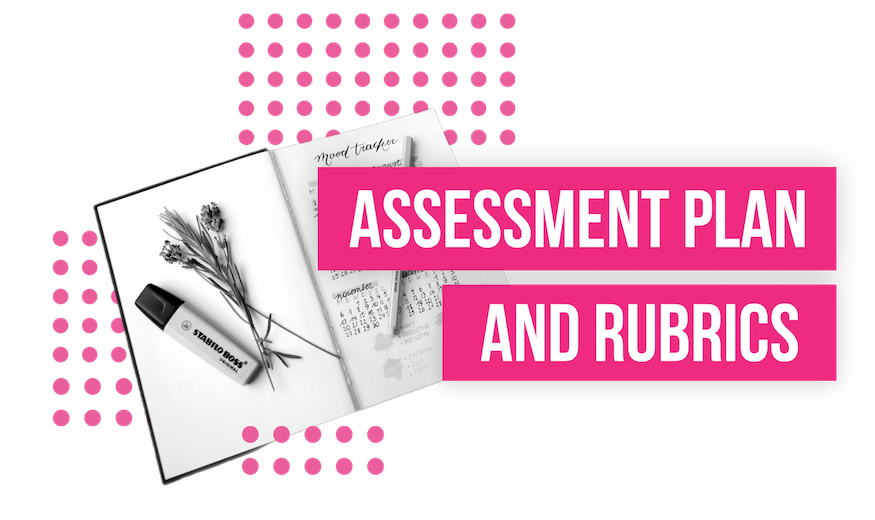
When designing a course it’s vital to think about the assessment plan which includes:
– identifying the grading system (decide on the weight of specific assignments, quizzes, discussions, etc)
– identifying what assignments should be compulsory/ optional
– what percentage should be minimal to get a pass (if not regulated by the educational institution)
– detailed rubrics for assessment of specific assignments
– which assignments need additional feedback
– what feedback would be included in the course
FORMATIVE, SUMMATIVE, DIAGNOSTIC ASSESSMENT
FORMATIVE ASSESSMENT
SUMMATIVE ASSESSMENT
DIAGNOSTIC ASSESSMENT
AUTHENTIC ASSESSMENT
STUDENT PORTFOLIO
What you should consider when designing assessment plan:
1. Assignments which check learning objectives (summative assessment) should weigh MORE than learning activities that support learners
2. Assignments which check higher order skills should weigh MORE than those which check LOTS (Lower Order Thinking Skills)
3. At least one assignment which checks a learning objective should be compulsory
4. Assessment plan should be constructed so that it could be impossible to get a pass without compulsory assignments
When designing rubrics take into account the following statements:
1. Rubrics should be worded as feedback. A learner should realise his/her mistakes and understand what to improve
2. Criteria of the rubrics should reveal how a learner attains learning objectives
3. Despite the scale (5-band or 10-band or any other), a pass in each criterion considers to be a more than a half
4. Description of performance higher than a pass should not contain negations (e.g. never, no, etc) or any information about mistakes.
5. Zero performance should also be included in the rubrics
You might also be interested in watching the following video about rubrics: